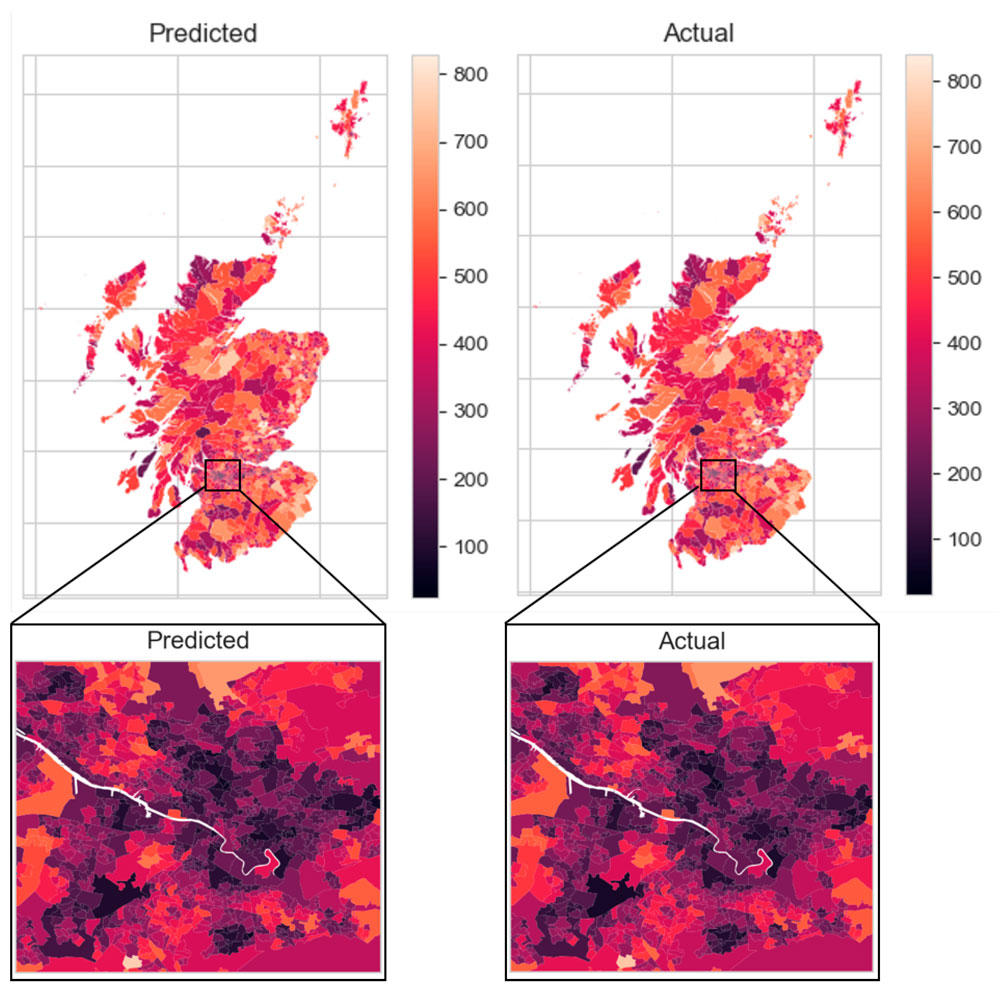James Dixon, Sofia Koukoura, Christian Brand, Malcolm Morgan and Keith Bell
Abstract
Predicting car ownership patterns at high spatial resolution is key to understanding pathways for decarbonisation—via electrification and demand reduction—of the private vehicle fleet. As the factors widely understood to influence car ownership are highly interdependent, linearised regression models, which dominate previous work on spatially explicit car ownership modelling in the UK, have shortcomings in accurately predicting the relationship. This paper presents predictions of spatially disaggregated car ownership—and change in car ownership over time—in Great Britain (GB) using deep neural networks (NNs) with hyperparameter tuning. The inputs to the models are demographic, socio-economic and geographic datasets compiled at the level of Census Lower Super Output Areas (LSOAs)—areas covering between 300 and 600 households. It was found that when optimal hyperparameters are selected, these neural networks can predict car ownership with a mean absolute error of up to 29% lower than when formulating the same problem as a linear regression; the results from NN regression are also shown to outperform three other artificial intelligence (AI)-based methods: random forest, stochastic gradient descent and support vector regression. The methods presented in this paper could enhance the capability of transport/energy modelling frameworks in predicting the spatial distribution of vehicle fleets, particularly as demographics, socio-economics and the built environment—such as public transport availability and the provision of local amenities—evolve over time. A particularly relevant contribution of this method is that by coupling it with a technology dissipation model, it could be used to explore the possible effects of changing policy, behaviour and socio-economics on uptake pathways for electric vehicles —cited as a vital technology for meeting Net Zero greenhouse gas emissions by 2050.

Publication details
Dixon, J., Koukoura, S., Brand, C., Morgan, M. & Bell, K. 2021. Spatially disaggregated car ownership prediction using deep neural networks. Future Transportation, 1(1): 113–133. doi: Opens in a new tab10.3390/futuretransp1010008
Banner photo credit: Alireza Attari on Unsplash
